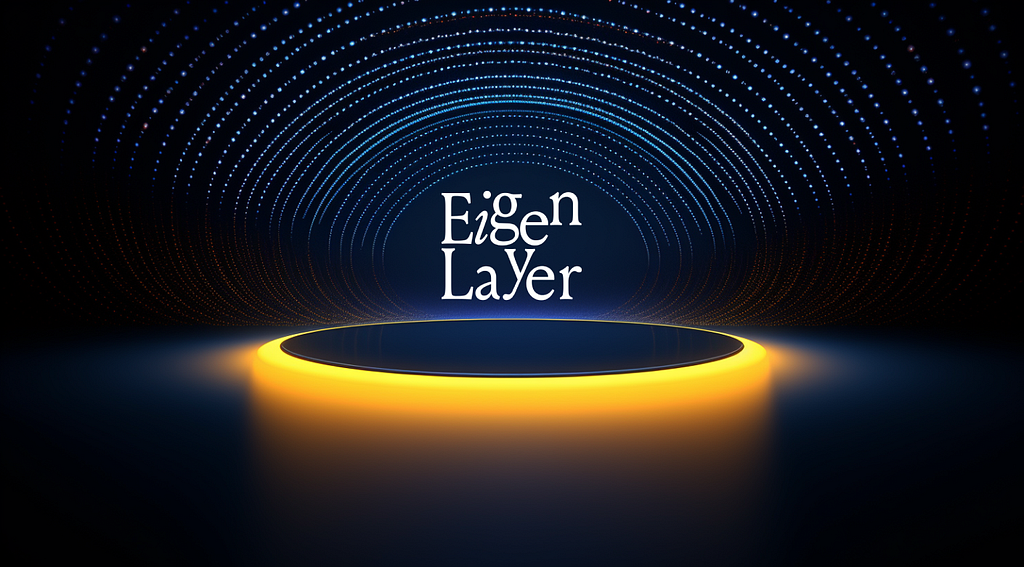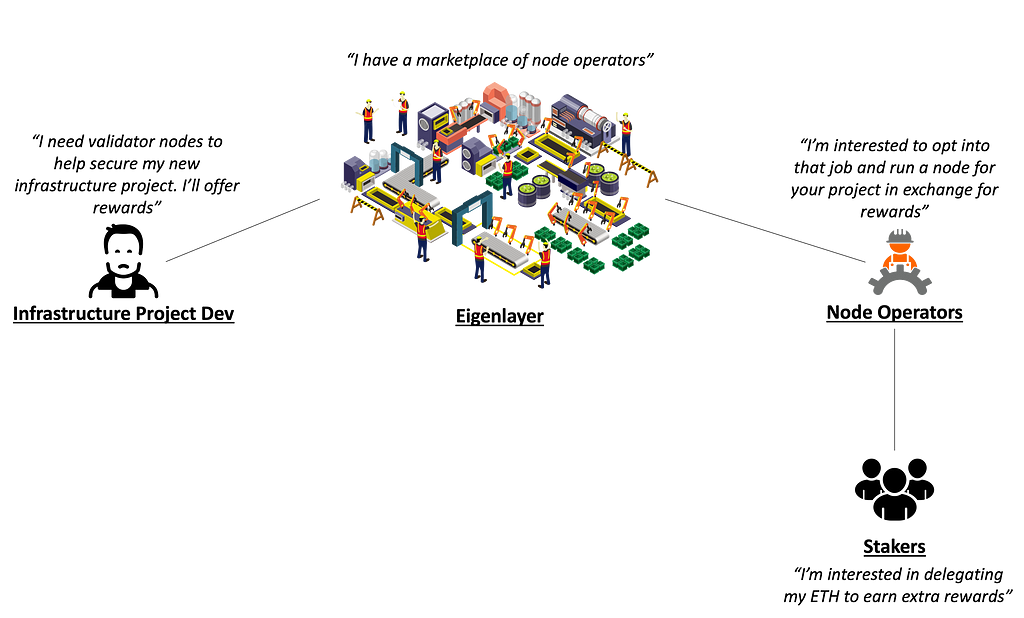EigenLayer Simply Explained
 Image taken from BanklessSetting the Context
Image taken from BanklessSetting the ContextToday’s Web3 landscape is teeming with innovation, particularly in the realm of decentralized applications (dApps). In the early days, creating a dApp meant building a new blockchain from scratch — a daunting task fraught with challenges. However, Ethereum changed the game by allowing developers to launch applications on it, thereby inheriting Ethereum’s robust decentralization and security features.
In essence, Ethereum offers what can be described as TRUST as a service to APPs built on its platform. This was a revolutionary concept, as it provided a solid foundation for applications like Aave and Uniswap, which couldn’t have been built on platforms like Bitcoin.
Yet, a significant challenge persists for new infrastructure projects in the Web3 space. These projects, which might involve creating a new oracle protocol or any foundational blockchain service, face the daunting task of building a decentralized validator set from the ground up. This is where EigenLayer steps in as a game-changer.
What is EigenlayerEigenLayer is a protocol on Ethereum that allows these infrastructure projects to leverage Ethereum’s existing validator set. By restaking their ETH, validators can extend the trust and security of Ethereum to these new protocols. In other words, EigenLayer enables the Ethereum validator set to provide TRUST as a service to INFRASTRUCTURE projects, similar to what Ethereum is to apps. This is an important point to note! EigenLayer is for infrastructure projects, not for application projects; understanding this point will greatly accelerate your understanding of EigenLayer.
Why EigenLayerYou might wonder why new infrastructure projects would prefer leasing Ethereum’s security services instead of establishing their own validator sets. Drawing a comparison to the Web2 domain, where opting for cloud services like Google’s suite of services is favored over creating your own tools from scratch, can shed light on this. The driving factors in both scenarios — rapid innovation, cost savings, and scalability — share a remarkable resemblance across the Web3 and traditional Web2 domains.
By leveraging EigenLayer, protocols can quickly find validators, avoid the steep costs associated with attracting and maintaining a dedicated validator set, and scale their security needs in tandem with their growth. This not only fosters innovation but also ensures economic and decentralized trust.
How EigenLayer WorksLet’s use the diagram below to understand the various stakeholders involved in EigenLayer.
 Overview of EigenLayer Stakeholders
Overview of EigenLayer StakeholdersThere are essentially 3 main stakeholders when it comes to EigenLayer. Let’s examine each stakeholder closely to understand how EigenLayer aligns their desires, fostering a mutually beneficial relationship among them
